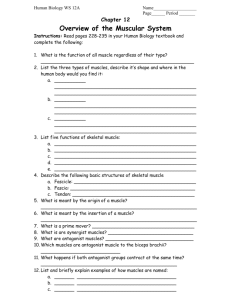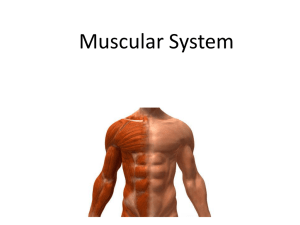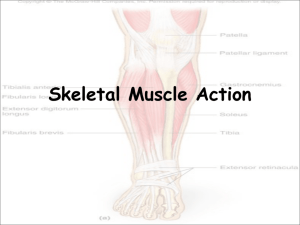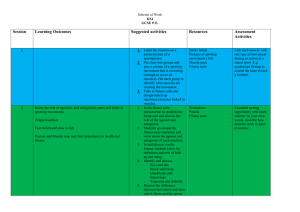Biology 111 Exam III Review Sheet
advertisement
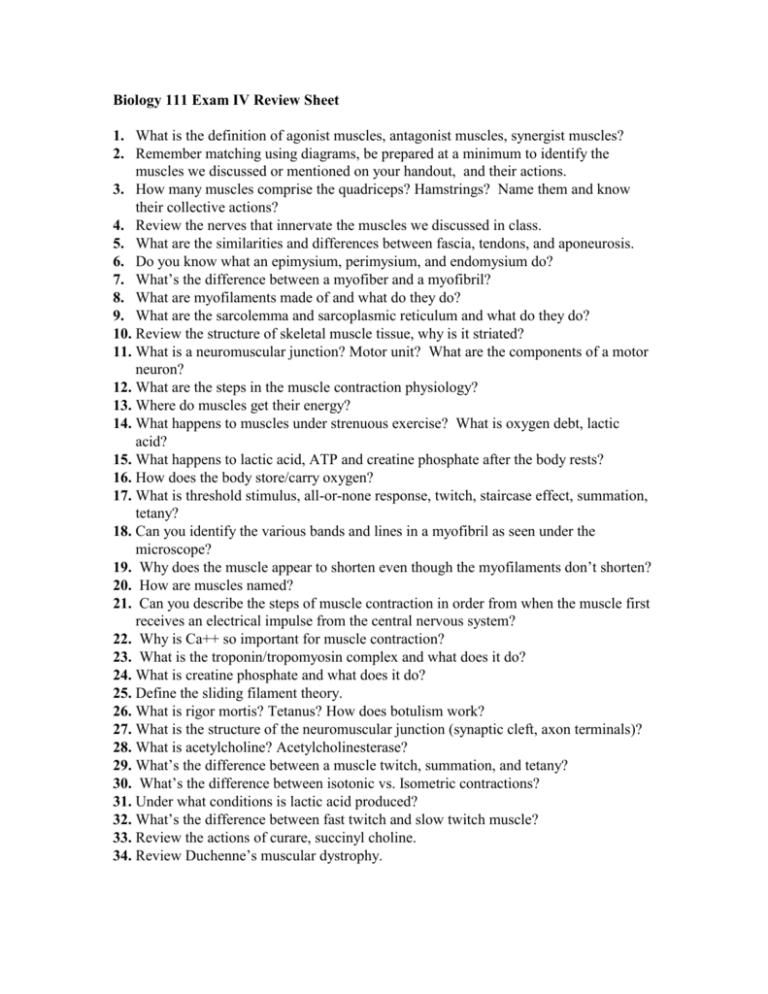
Biology 111 Exam IV Review Sheet 1. What is the definition of agonist muscles, antagonist muscles, synergist muscles? 2. Remember matching using diagrams, be prepared at a minimum to identify the muscles we discussed or mentioned on your handout, and their actions. 3. How many muscles comprise the quadriceps? Hamstrings? Name them and know their collective actions? 4. Review the nerves that innervate the muscles we discussed in class. 5. What are the similarities and differences between fascia, tendons, and aponeurosis. 6. Do you know what an epimysium, perimysium, and endomysium do? 7. What’s the difference between a myofiber and a myofibril? 8. What are myofilaments made of and what do they do? 9. What are the sarcolemma and sarcoplasmic reticulum and what do they do? 10. Review the structure of skeletal muscle tissue, why is it striated? 11. What is a neuromuscular junction? Motor unit? What are the components of a motor neuron? 12. What are the steps in the muscle contraction physiology? 13. Where do muscles get their energy? 14. What happens to muscles under strenuous exercise? What is oxygen debt, lactic acid? 15. What happens to lactic acid, ATP and creatine phosphate after the body rests? 16. How does the body store/carry oxygen? 17. What is threshold stimulus, all-or-none response, twitch, staircase effect, summation, tetany? 18. Can you identify the various bands and lines in a myofibril as seen under the microscope? 19. Why does the muscle appear to shorten even though the myofilaments don’t shorten? 20. How are muscles named? 21. Can you describe the steps of muscle contraction in order from when the muscle first receives an electrical impulse from the central nervous system? 22. Why is Ca++ so important for muscle contraction? 23. What is the troponin/tropomyosin complex and what does it do? 24. What is creatine phosphate and what does it do? 25. Define the sliding filament theory. 26. What is rigor mortis? Tetanus? How does botulism work? 27. What is the structure of the neuromuscular junction (synaptic cleft, axon terminals)? 28. What is acetylcholine? Acetylcholinesterase? 29. What’s the difference between a muscle twitch, summation, and tetany? 30. What’s the difference between isotonic vs. Isometric contractions? 31. Under what conditions is lactic acid produced? 32. What’s the difference between fast twitch and slow twitch muscle? 33. Review the actions of curare, succinyl choline. 34. Review Duchenne’s muscular dystrophy.







